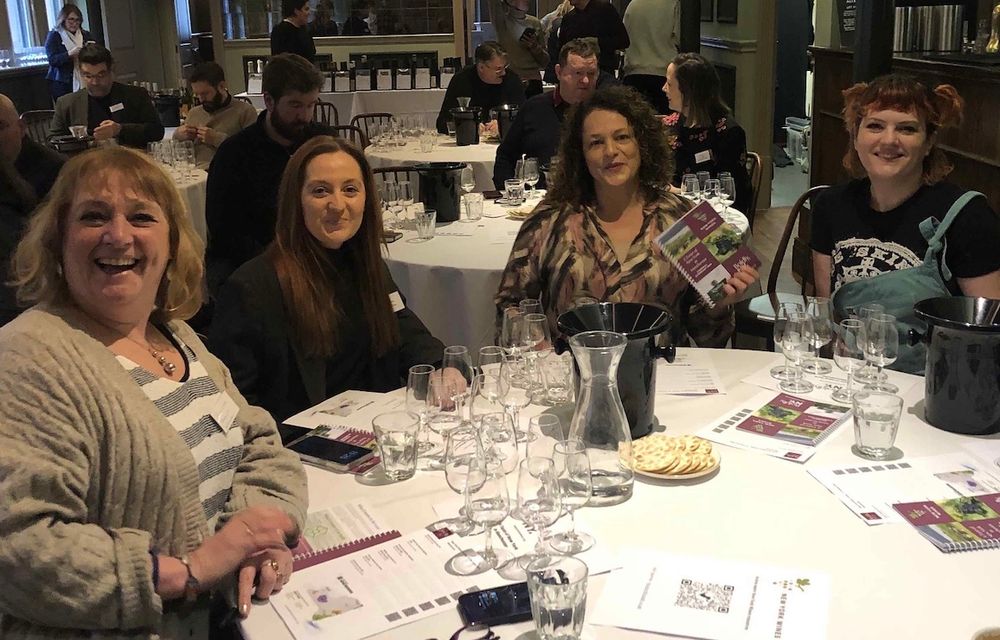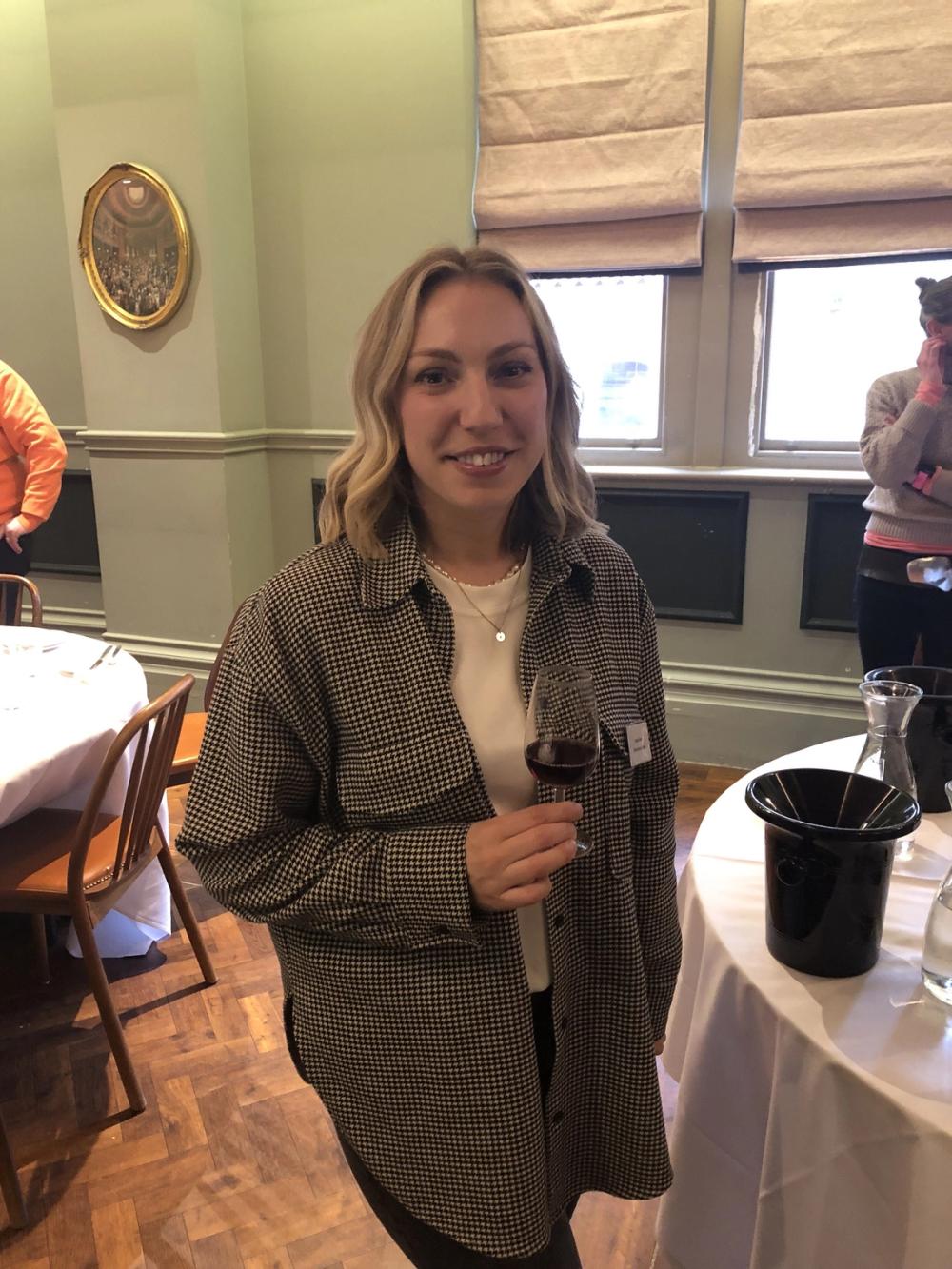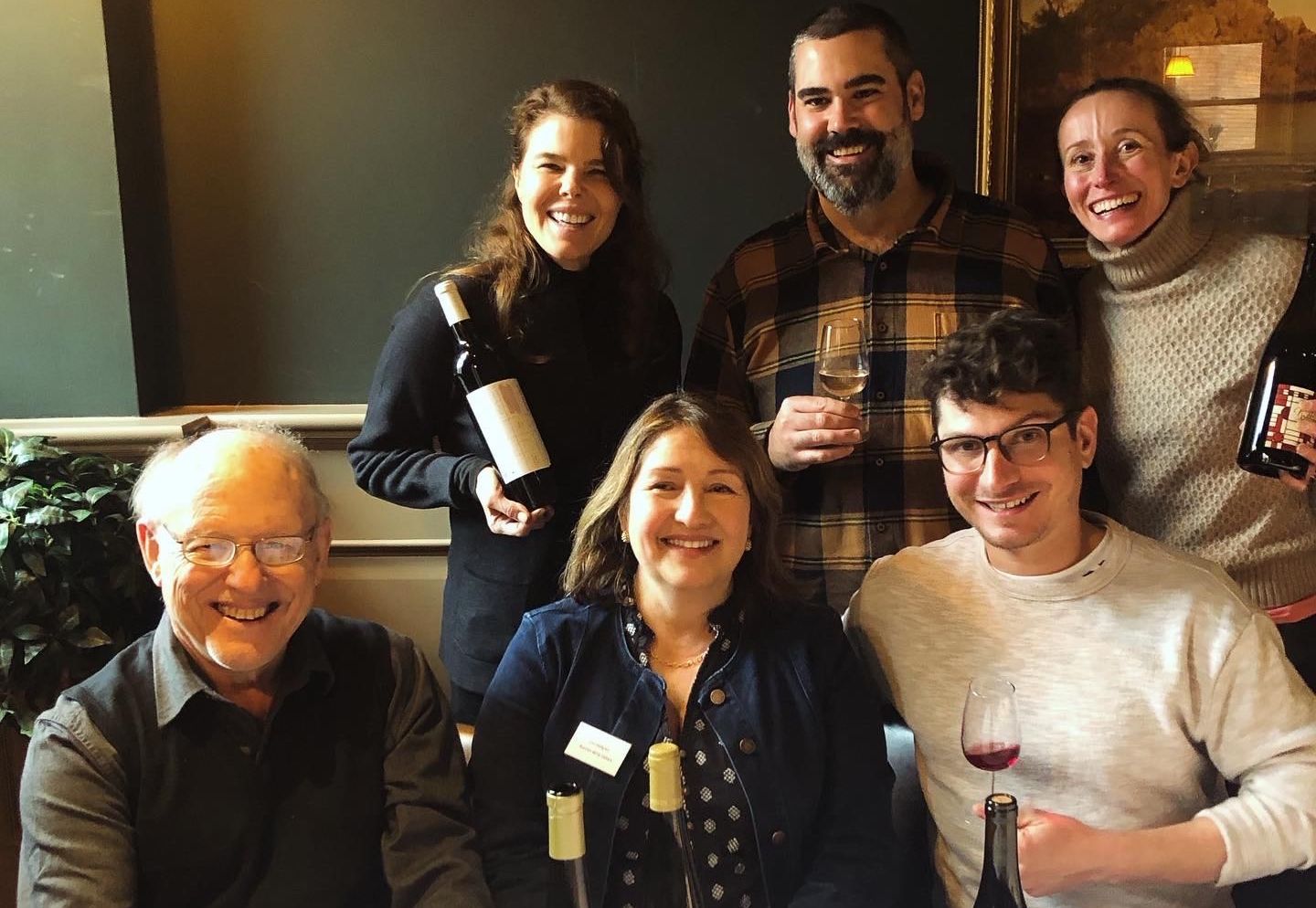Just the association with New York, gave the event a certain sparkle, even before anyone had popped a cork or trundled along to The Fountain House in Manchester to see what its wines are all about. It also helped the venue had thoughtfully prepared a New York-inspired playlist, just to get everyone in the mood as they arrived.
New York State produces wine with regional and varietal specificity, great drinkability and in some cases longevity too.Producing over 60 different grape varieties and now exporting to over 30 countries, it really does demonstrate what can be produced in the most challenging conditions.
With representatives from the on and off trade, importers large and small, sommeliers and independent retailers, the event was a sell-out from the beginning, such was the interest in this region’s wines and the opportunity to hear directly from the winemakers who had made the journey over.
The event started with a introductory masterclass to the region, hosted by Dan Belmont, e-commerce retailer Good Wine Good People.

Dan Belmont was able to introduce the buyers, wine merchants and sommeliers to the wines of New York in an opening masterclass
“I selected the flight to not only introduce the grapes and styles of New York State wine, but tie into an overview of the statewide geography, geology, climate and history,” said Belmont who is originally from New York himself but is now based in the UK.
He is, though, doing what he can to spread the message of New York wines through GWGP’s website which includes an impressive New York Bottle Shop where he features wines from Finger Lakes, Lake Erie, Niagara Escarpment, Champlain Valley, Upper Hudson, Hudson River Region and Long Island.
“The wineries, mostly small family owned and operated businesses, are making some fantastic cool climate food-friendly wines with real quality and finesse and it’s great to be showcasing these outside of the UK’s capital,” he added.
New York: a history
To give a brief background to the current New York State wine industry, the first commercial viticulture took place around 1860, leading to several wineries opening in the Finger Lakes area.By the end of the 19th century, sparkling, dessert and table wines started to win awards in European competitions, putting it on the world’s winemaking map.This was followed by Prohibition, banning the production, importation and sale of alcohol from 1920-1933, obviously a major setback for the American wine industry generally, for almost half a century.
Fast forward to the 1960s and early 1970s, several flagship wineries took root, such as Benmarl Wine Company and Cascade Mountain Vineyard in the Hudson Valley, and Bully Hill Vineyards and Dr Konstantin Frank Vinifera Wine Cellars in the Finger Lakes. Frank, a Ukrainian emigrant, arrived in the Finger Lakes in the early 1950s and began vinifera experiments, first with the New York State Agricultural Experiment Station, then with Fournier at Gold Seal Vineyards. He released the first vintage from his eponymous brand in 1962.

The New York tasting featured leading figures from across the north west including wine writer, Jane Clare, Sarah Turner of Beyond Wines, Anna Tutton at Beeswing and Kelly Bishop of Manchester Wine Tours
Around this time, German emigrant Hermann J Wiemer purchased Finger Lakes land in 1973 that was previously planted with soybeans and experimented with plantings of Vitis vinifera—particularly Riesling—with much success. Their first vintage was in 1981, and the winery and vine nursery are still in operation today.
Most of the wineries are still small family-operated businesses, which concentrate on limited production of premium varietal table wines. Typically, the owners of farm wineries oversee the entire process from planting to marketing.Most offer tours and tastings, which helps explain why over three million tourists visit New York wineries each year.
What we tasted
Buyers, merchants and sommeliers then had the chance to wines for themselves in a walk-round tasting, incorporating a great, diverse range of wines from across the state (see below for the full list of wineries taking part). Representatives from Ally Wines, were also on hand to pour and explain the wines to an enthusiastic Mancunian crowd.

Momentum Wines' Rachel Icke says she was impressed by the New York wines she tasted
Rachel Icke from Momentum Wines based in Oswestry, a retailer with a thriving wholesale business and online wine shop, said she was impressed by the wines she tasted and it was just “so exciting to have a tasting dedicated to this underrepresented wine region”.
She added: “Having the actual winemakers here is great and they are so friendly and enthusiastic. Whilst it sounds obvious, I’m also thrilled that it is taking place in Manchester.”
For her the wines are very much a “hand sell’ and would be appropriate for wine merchants and wine focused on-trade venues -who had the time to tell the story behind the label.
Jen Frost, part of the on-trade team at Boutinot, said it has wines from other US states, but not, as yet, New York. But the “definitely worthwhile” event had certainly opened her eyes to what was available.
For the producers it was a great opportunity to meet buyers and potential customers outside of London where so many of its previous tastings and events have been held.who had made the journey were also super-thrilled with the response and engagement on the day.

Celeste Borders from New York producer RGNY says it was a good opportunity to meet wine buyers outside London
Celeste Borders from RGNY in Long Island, who had brought a sparkling Riesling and its Scielo Tinto – a blend of Merlot, Cabernet Sauvignon, Cabernet Franc, Petit Verdot and Malbec - to the tasting said she was really pleased to there. “I’ve heard so many great things about the restaurant scene in Manchester,” she added.
It was also an opportunity, she said, to talk about the differences that Long Island has compared to the more hostile parts of New York State. By comparison Long Island’s wine producing is “a walk on the mild side” due to it being considerably milder than most of the state. It has moderating ocean breezes keeping temperature extremes at bay, which can mean longer growing seasons and an avoidance of winter damage.
From the wines I tasted a real stand out was the chance to sample the Hermann J Wiemer Bio 2017 Riesling. The wine comes from the first parcel of estate vineyards which has been converted to biodynamic viticulture principles (something it plans to expand upon).As an Alsace Riesling fan, I was impressed with the depth of flavour and gorgeous notes of tropical fruits.A serious wine with great ageing potential, delicious.

Buyers were able to get an introduction to New York State Wines by meeting producers and winemakers and tasting their wines
Which was what the day was all about. The chance to show buyers in the North West of England just how serious and far New York State wines have come in recent years. There was a huge sense of positivity from those who came about the wines tasted, and I daresay a lot of changed opinions, which is really what the event set out to achieve.
A day of big New York dreams and the ‘Boldly’ branding being fully explained.Let’s face it, if you can make great wine there, you can make it anywhere.
* Wineries represented at the tasting included: Anthony Road Wine Company, Bedell Cellars, Boundary Breaks, Buttonwood Grove, Channing Daughters Winery, Element Winery, Forge Cellars, Fox Run Vineyards, Glenora Wine Cellars, Hermann J. Wiemer Vineyard, Heron Hill Winery, Hosmer Winery, Keuka Lake Vineyards, Knapp Winery, Lamoreaux Landing Wine Cellars, Living Roots & Co., Mazza Chautauqua Cellars, Nathan Kendall Wines, Osmote Wine, Ravines Wine Cellars, RGNY, Six Eighty Cellars, Sparkling Pointe Vineyards, Weis Vineyards, Wolffer Estate Vineyard.
* Janet Harrison helped organise the New York wines tasting alongside alongside Judy Kendrick, in collaboration with R&R Teamwork.
































